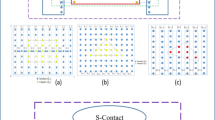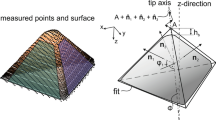Abstract.
The STM can be used to investigate lifetimes of hot holes in a surface state at low temperatures. We analysed dI/dV data from Ag(111) using detailed tunnelling calculations and a simple model and found an electron self-energy of Σ=4.9±0.6 meV. The corresponding lifetime τ= 67±8 fs is considerably higher than those determined by angle-resolved photoemission, although it remains below theoretical predictions. Spatially resolved dI/dV spectra reveal that the lifetime decreases drastically in proximity to defects such as surface steps.
Similar content being viewed by others
Author information
Authors and Affiliations
Additional information
Received: 22 March 1999 / Accepted: 25 June 1999 / Published online: 16 September 1999
Rights and permissions
About this article
Cite this article
Berndt, R., Li, J., Schneider, W. et al. Surface-state linewidth from scanning tunnelling spectroscopy. Appl Phys A 69, 503–506 (1999). https://doi.org/10.1007/s003390051453
Issue Date:
DOI: https://doi.org/10.1007/s003390051453




